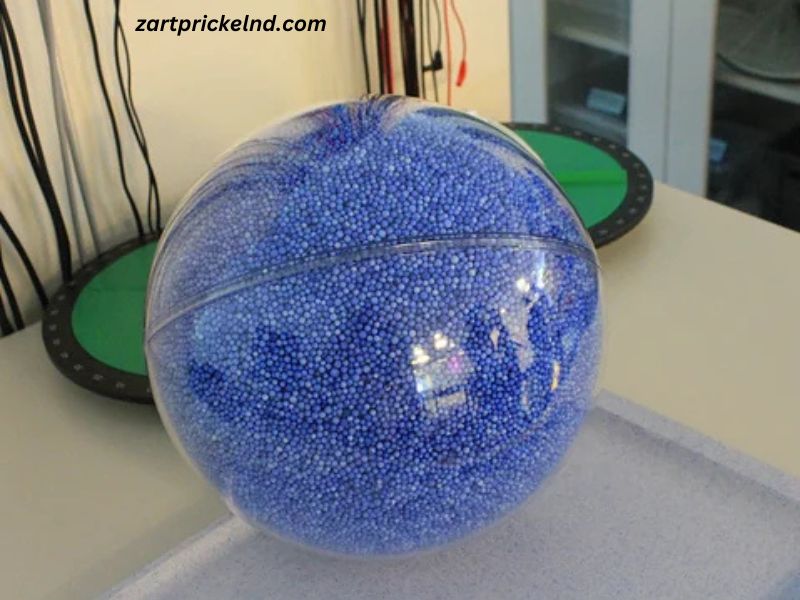The Sun, a massive ball of gas and energy, is the heart of our solar system. It provides the light and heat essential for life on Earth and is the central force around which all the planets orbit. But have you ever wondered just how big the Sun really is compared to Earth? In fact, one of the most intriguing questions that often arises is, “How many Earths can fit in the Sun?”
In this article, we’ll explore the size of the Sun, how it compares to Earth, and just how many Earths could fit inside it. We will also delve into the Sun’s structure, the science behind its immense size, and the implications for our understanding of the universe.
How Many Earths Can Fit in the Sun?
The question of how many Earths can fit in the Sun seems almost impossible to answer because of the sheer scale involved. However, scientists have done the math and come up with some interesting figures.
- Size Comparison:
The Sun has a diameter of about 1.4 million kilometers (870,000 miles), which is roughly 109 times larger than Earth’s diameter. To understand just how vast this difference is, imagine lining up 109 Earths side by side. The Sun’s volume is so much greater that if you could hollow it out, around 1.3 million Earths would fit inside it. - Volume of the Sun:
The Sun is primarily composed of hydrogen and helium, and its total volume is approximately 1.41 x 10^18 cubic kilometers. In contrast, Earth’s volume is about 1.08 x 10^12 cubic kilometers. When you divide the Sun’s volume by Earth’s volume, you get the staggering number of about 1.3 million Earths.
Understanding the Immense Size of the Sun
To further appreciate how many Earths can fit in the Sun, we need to understand its immense size and structure. The Sun is not a solid object; it is a gaseous sphere made up of hot plasma. This means it doesn’t have a distinct surface like Earth does. Here are a few key details about the Sun’s size and structure:
- Diameter:
As mentioned, the Sun’s diameter is about 1.4 million kilometers. To put this into perspective, if the Sun were hollowed out, it could fit over 1.3 million Earths inside. - Mass:
The Sun’s mass is approximately 330,000 times the mass of Earth. This makes up about 99.86% of the total mass of our entire solar system. Despite its large mass, the Sun’s composition (mostly hydrogen and helium) keeps its density relatively low compared to solid planets like Earth. - Volume:
The volume of the Sun is incredibly large. To illustrate, the Sun could hold over 1.3 million Earth-sized planets within it, which shows just how vast the Sun truly is compared to Earth. - Surface Area:
The surface area of the Sun is around 11,990 times greater than the surface area of Earth. If you could somehow place Earth on the surface of the Sun, you would find that Earth would be just a tiny speck in comparison.
How Does the Sun’s Size Affect Our Solar System?
The Sun’s enormous size is not just a fun fact to marvel at; it plays a crucial role in the dynamics of our solar system. Here are a few ways the Sun’s size impacts Earth and the other planets:
- Gravitational Pull:
The Sun’s gravitational force holds the entire solar system together. Without the Sun’s immense gravity, Earth and the other planets would not be able to orbit it. The Sun’s gravitational pull extends far beyond the orbit of Pluto, influencing comets and asteroids in the outer reaches of the solar system. - Heat and Light:
The Sun’s size also determines its ability to emit energy. The Sun radiates an incredible amount of energy, and it is this energy that powers life on Earth. The Sun produces energy through a process called nuclear fusion, where hydrogen atoms are fused together to form helium, releasing vast amounts of energy in the form of heat and light. Without this process, life on Earth would not exist. - Solar Wind:
The Sun also emits a constant flow of charged particles known as the solar wind. While this wind is crucial for creating phenomena like auroras, it can also impact space weather. If the Sun were much smaller, it might not have the same level of solar wind, which helps shape the space environment around Earth.
The Sun’s Life Cycle and Its Future
The Sun’s size also determines its life cycle. Stars like the Sun go through a series of stages, from formation to eventual death. Understanding these stages helps scientists predict the future of our solar system.
- Current Phase:
The Sun is currently in what is known as the main sequence phase, where it has been for about 4.6 billion years. During this phase, it steadily fuses hydrogen into helium in its core, producing the energy that powers it. The Sun has enough hydrogen to last for several billion more years before it runs out of fuel. - Red Giant Phase:
As the Sun ages, it will eventually run out of hydrogen to fuse in its core. When this happens, it will begin to expand, becoming a red giant. During this phase, the Sun will grow so large that it could engulf the inner planets, including Mercury, Venus, and possibly Earth. It is theorized that the Sun could reach a size where its outer layers would extend to the Earth’s orbit, drastically altering the makeup of our solar system. - Final Stages:
After the red giant phase, the Sun will shed its outer layers, leaving behind a dense core known as a white dwarf. This will be the final stage of the Sun’s life cycle. However, this process is not expected to happen for another 5 billion years.
Interesting Facts About the Sun
In addition to the fascinating concept of how many Earths can fit in the Sun, here are a few other interesting facts that help us understand just how extraordinary our star really is:
- The Sun is Mostly Hydrogen:
About 75% of the Sun’s mass is hydrogen, while 24% is helium. The remaining 1% consists of heavier elements such as oxygen, carbon, neon, and iron. - The Sun’s Temperature:
The temperature at the Sun’s core is around 15 million degrees Celsius (27 million degrees Fahrenheit). The surface temperature is about 5,500 degrees Celsius (9,932 degrees Fahrenheit). The temperature decreases as you move away from the core to the outer layers. - Solar Flares:
The Sun occasionally releases bursts of energy known as solar flares, which can impact space weather and sometimes affect satellite communications and power grids on Earth. - The Sun’s Rotation:
The Sun does not rotate as a solid body. Instead, different parts of the Sun rotate at different speeds. The equator rotates once every 24 to 25 days, while the poles take about 35 days to complete a rotation.
Conclusion
To answer the original question, “How many Earths can fit in the Sun?”, the answer is about 1.3 million Earths. The size of the Sun is truly mind-boggling, and its immense scale is just one of the many reasons why it is so vital to the functioning of our solar system.
The Sun’s size and the energy it produces are essential to life on Earth. Without it, our planet would be a cold, dark, and barren place. Understanding the Sun’s size, structure, and importance not only satisfies our curiosity but also helps us better appreciate the delicate balance that makes life possible.
As we continue to study the Sun and other stars in the universe, we can learn more about how stars evolve, their life cycles, and how they shape the cosmos. Whether you’re a space enthusiast or just someone curious about the world around you, understanding how many Earths can fit in the Sun is a reminder of just how vast and awe-inspiring the universe truly is.



